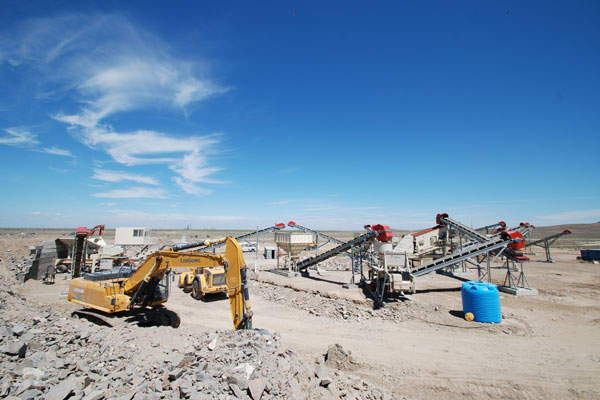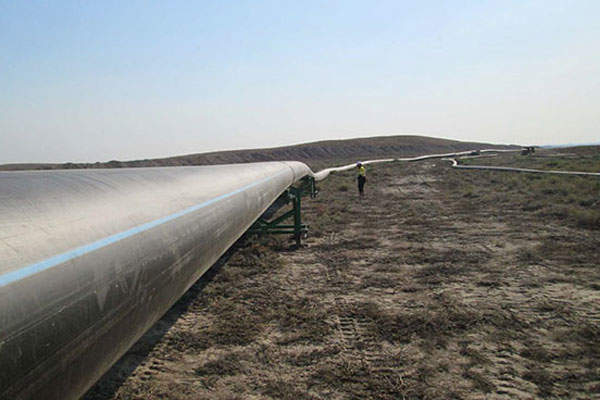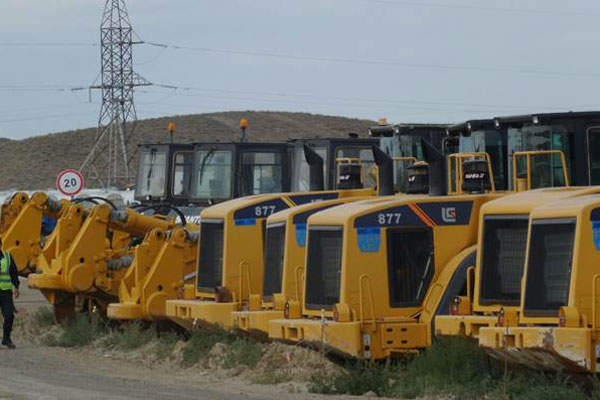KAZ Minerals (previously known as Kazakhmys) owns the Aktogay open-pit copper mine. It is the largest copper producer in Kazakhstan, located in the eastern region of Kazakhstan, approximately 250km from the border with China.
The project comprises of an open-pit mine and an on-site concentrator to produce copper cathode from oxide ore and copper concentrate from the sulphide ore. Molybdenum is also being produced as a by-product.
Approval for the copper project was issued by the board of Kazakhmys in December 2012 and construction works began in 2013. The Aktogay mining operation began oxide copper cathode production in December 2015, and sulphide copper concentrate production in February 2017.
Commercial production from the Aktogay sulphide concentrator was achieved in October 2017. The $2bn copper project is anticipated to have a mine life of 28 years.
A $1.2bn expansion project was approved for the mine in December 2017 to double sulphide ore processing capacity from 25Mt to 50Mt. The expansion project is anticipated to commence production in the second half of 2021 and will increase copper production from sulphide ore to 170,000t between 2022 and 2027 and to 130,000t thereafter.
Aktogay copper mine geology and mineralisation
The mine features good infrastructure, including a new two-lane highway and the Aktobe-Kostanai railway line.
The Aktogay copper-molybdenum porphyry deposit lies on the southern border of East Kazakhstan Oblast along the west-northwest-striking Aktogai fault zone. The ore body consists of a copper oxide deposit sitting atop a larger sulphide deposit that also contains molybdenum.
Copper is mostly contained in the form of chalcopyrite and mineralisation occurs in quartz-carbonate filled stockwork fractures. Mineralisation is present in the form of a compact body within the rocks of the first intrusive phase and the volcanogenic-sedimentary rocks of the Keregetas Formation.
Approximately 70% of the mineralisation is hosted by intrusive rocks, mainly diorites and granodiorites, and the remaining by the volcanogenic-sedimentary rocks of the Keregetas Formation.
Aktogay copper mine reserves
As of 31 December 2017, the Aktogay mine is estimated to contain proven and probable sulphide ore reserves of 1.4Mt, as well as 99,910t of oxide reserves.
Mining and processing of ore at Aktogay mine
Conventional drill and blast methods of mining using trucks and excavators are being used for the Aktogay open-pit mining operation. The extracted ore is crushed in a primary crusher at the mine site before being taken to the concentrator stockpile.
The stockpiled ore is reclaimed by the underground feeders and delivered to the grinding section of the concentrator that houses a 28MW semi-autogenous grinding (SAG) mill. Ore is then processed into slurry by the drive ball mills before being delivered to the flotation section of the concentrator plant.
Copper concentrate is separated from the waste tailings as it passes through the floatation circuit and molybdenum is extracted as a separate product at the end of the floatation process. The obtained copper concentrate is dewatered and stockpiled in powder form at the filter facility before being loaded into rail wagons for shipping to smelters.
The oxide processing facility for the mine features a dump leach facility to produce copper rich pregnant leach solution (PLS) using sulphuric acid as the leaching agent, as well as a solvent extraction-electro winning plant to recover the dissolved copper from the PLS.
Aktogay copper mine production
Aktogay produced 64,000t of copper in the first nine months of 2017, including 23,000t of copper from the sulphide ore during the third quarter of 2017.
During the first nine months of 2017, approximately 11Mt of oxide ore was placed on leach pads, resulting in the production of 18,000t of copper cathode.
Infrastructure facilities at Aktogay copper mine
Power supply for the mine is provided by the Karaganda GRES-2 power plant through an 110kV overhead transmission line. Water is supplied from a borefield development in the Zhuzagash reservoir through a 27km-long underground pipeline.
Other infrastructure facilities comprise a 60-person accommodation camp, three warehouses, and associated utilities.
Financing of the Aktogay project
The Aktogay copper project is funded by a $1.5bn loan facility from China Development Bank. The loan facility, signed in December 2011, comprises two separate agreements, including a USD agreement for up to $1.34bn and an RMB agreement for up to RMB1.0bn (approximately $160m).
Contractors involved
Alarko is the engineering, procurement, and construction (EPC) contractor for the processing plant at Aktogay.
ABB provides complete electrification and automation solutions for the Aktogay copper plant under a contract awarded in December 2012. ABB was also awarded a $44m contract in May 2012 to provide three gearless mill drive systems, including the 28MW semi-SAG mill and two 22MW ball mills.
Ausenco was awarded a $30m engineering services contract for the open-pit mine in October 2011.
BIR provides engineering and consultancy services for architectural, civil, mechanical and electrical works for the Aktogay copper processing plant.
In September 2014, Non Ferrous China (NFC) was awarded the contract for the construction of the sulphide concentrator.






